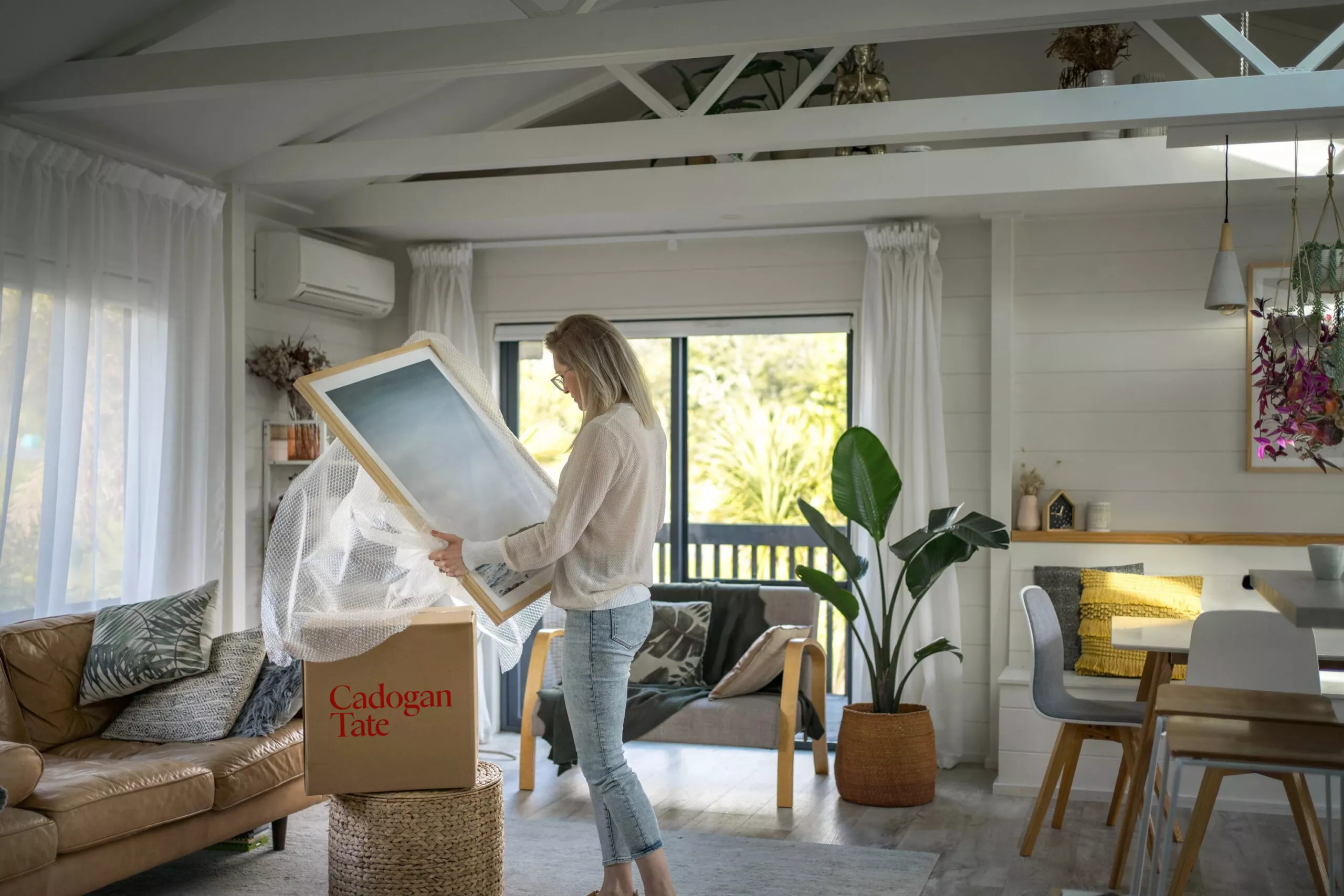Fine art packaging: A DIY guide to do’s and don’ts

Ideally, packaging fine art prints and other fine art items is a job best left to a professional. Fine art logistics and packaging is a highly skilled field, and one where an innocent and apparently innocuous mistake can have unfortunate consequences.
However, the nature of house moves mean that sometimes, for whatever reason, the task of packing falls to the homeowner. This is a guide to common errors that non-professionals can make during the packing process, and also to how best to protect your valuable works against the elements and the hidden dangers of transit.
Do: Use the right materials
Many instances of damage to fine artworks are caused by use of incorrect fine art packaging materials. At best, poor quality materials risk doing a suboptimal job of protecting your belongings–and at worst, they can themselves be the source of damage. Common mistakes include use of paper that is not completely acid-free, bubble wrap that provides little to no shock absorption, and crate liners that lack insulating properties. All such materials can easily result in irreparable damage.
Don’t: Try to cut corners on supplies
If you are going to pack your artworks yourself, it’s important to purchase your supplies from a reputable source. Fine art packaging supplies can often be purchased from full-service moving companies, who will also be happy to instruct you in their use (especially if you are using the company in question to handle the rest of your move). Purchasing from such a company or other reputable supplier eliminates the risk of being sold poor-quality materials that risk damaging your precious items.
Do: Lay prints and other paper-based works flat
Fine art print packaging can appear relatively straightforward when compared to packing other, more delicate and/or irregularly shaped pieces. However, it should nevertheless be approached with care. For example, while the idea of protecting a valuable photograph or print within a cardboard tube can appear tempting on face value, fine art prints are not posters, and rolling them in any way is asking for trouble. In the worst cases, doing so can result in visible damage to the artwork: paint, for instance, can easily crack if the paper to which it is applied is deformed. Even if such catastrophes are avoided, rolling a print will almost inevitably result in the paper being visibly curved forever after. Paper-based works should always be laid flat and horizontally.
Don’t: Fail to separate these items
Multiple prints and similar items can be laid atop one another, but if so, each item must be separated physically from the ones below and above it. There are several ways to do this–the most reliable are archival fine art sleeves, but sheets of archival paper can also be used. In the latter case, the paper must be acid-free. Failing to do this can end with pigments bleeding between pieces, paint sticking to the item above, and all manner of other undesirable outcomes.
Do: Construct crates if you are able to do so
Professional packers specialise in designing and building custom crates for fragile artworks–and If you have the skills and equipment to build similar crates, doing so is an excellent way to protect particularly delicate and/or valuable items. If you are planning to take on this task, be careful to measure carefully, leave sufficient room for whatever lining is required (thermal insulation and/or multiple layers of shock absorbing bubble wrap are common), and use a sturdy but lightweight material such as 12mm or 18mm marine plywood for the crate’s exterior.
Don’t: Settle for a “good enough” off-the-shelf solution
If building a crate yourself from scratch is not feasible, it can be tempting to simply order a pre-built crate that’s of vaguely similar dimensions and pack the empty space out with duvets, pillows and so on. However, items slipping and sliding within crates during transit is a common source of damage, and ensuring that an item fits snugly within its crate is the single best way to mitigate this risk. Off-the-shelf crates can themselves be customised to fit their contents as closely as possible; you may be able to do this yourself, but if not, a skilled relative or neighbour may be able to help!
Do: Think before you start packing
It’s understandable to simply want to get on with the job of packing, especially if the reason that you have ended up having to do it yourself is that time is short. However, sitting down to plan out which items can be packed together, which items will require particular care and consideration, and so on. Racing straight into boxing up items may well end up taking more time in the end, as you might find yourself having to take previously packed items out of their boxes to repack them more efficiently.
Don’t: Be afraid to ask for help
Ultimately, preserving the integrity and value of your artwork is always paramount. If the task of packing your fine art turns out to be more difficult than you anticipated, or you find yourself unsure of how to approach packing something, don’t be afraid to reach out to the company handling your move for advice. A reputable moving company will be happy to provide advice, and also–unless there is some reason they are unable to do so–to step in and take over if required.



